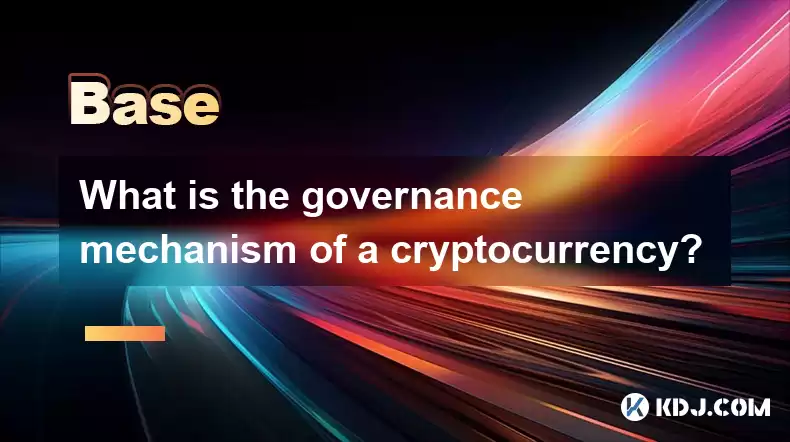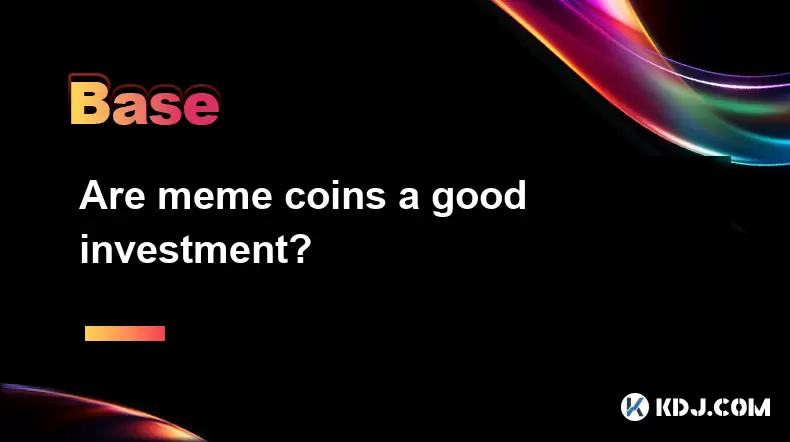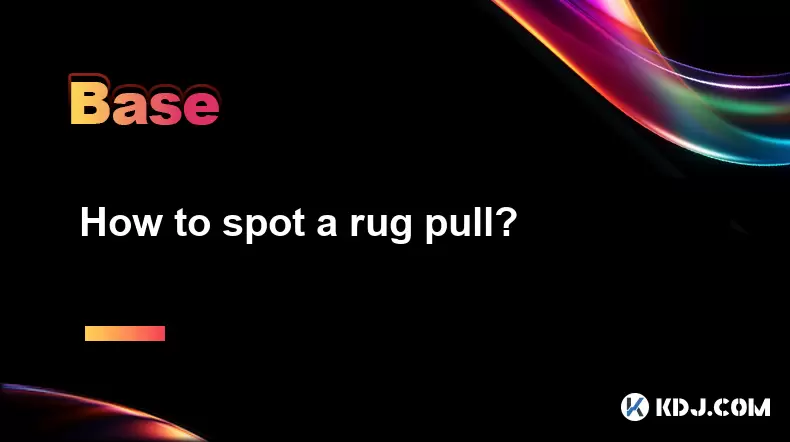-
 Bitcoin
Bitcoin $116700
0.24% -
 Ethereum
Ethereum $3973
4.34% -
 XRP
XRP $3.283
7.68% -
 Tether USDt
Tether USDt $1.000
0.01% -
 BNB
BNB $789.8
2.27% -
 Solana
Solana $176.2
3.31% -
 USDC
USDC $0.9999
0.00% -
 Dogecoin
Dogecoin $0.2238
5.14% -
 TRON
TRON $0.3389
-0.51% -
 Cardano
Cardano $0.7907
4.03% -
 Stellar
Stellar $0.4527
10.02% -
 Hyperliquid
Hyperliquid $41.07
4.27% -
 Sui
Sui $3.794
1.77% -
 Chainlink
Chainlink $19.49
10.40% -
 Bitcoin Cash
Bitcoin Cash $580.9
0.74% -
 Hedera
Hedera $0.2617
4.32% -
 Avalanche
Avalanche $23.41
3.67% -
 Ethena USDe
Ethena USDe $1.001
-0.03% -
 Litecoin
Litecoin $122.4
1.38% -
 Toncoin
Toncoin $3.364
1.49% -
 UNUS SED LEO
UNUS SED LEO $8.988
0.37% -
 Shiba Inu
Shiba Inu $0.00001295
2.82% -
 Uniswap
Uniswap $10.62
5.75% -
 Polkadot
Polkadot $3.922
4.46% -
 Dai
Dai $1.000
0.01% -
 Bitget Token
Bitget Token $4.494
2.15% -
 Monero
Monero $268.0
-1.30% -
 Cronos
Cronos $0.1523
3.68% -
 Pepe
Pepe $0.00001127
4.43% -
 Aave
Aave $285.4
4.85%
What is the governance mechanism of a cryptocurrency?
Cryptocurrency governance, vital for long-term success, uses diverse methods like on-chain and off-chain voting, or DPoS, to manage protocol upgrades, fees, and community funds; participation often requires staking tokens and understanding the process.
Mar 15, 2025 at 03:06 pm

Key Points:
- Cryptocurrency governance mechanisms vary widely, depending on the specific cryptocurrency's design.
- Common methods include on-chain voting, off-chain voting, and delegated proof-of-stake (DPoS).
- Governance decisions typically involve protocol upgrades, fee adjustments, and community fund allocation.
- Participation in governance requires holding and staking the cryptocurrency, and understanding the process.
- Security and transparency are crucial aspects of effective cryptocurrency governance.
What is the Governance Mechanism of a Cryptocurrency?
Cryptocurrency governance mechanisms define how decisions impacting a cryptocurrency's protocol are made. Unlike traditional companies with centralized leadership, cryptocurrencies rely on decentralized systems. These systems empower token holders to participate in shaping the future of their chosen digital asset. The effectiveness of this process is crucial for a cryptocurrency's long-term success and sustainability. Different cryptocurrencies employ diverse methods, each with its own advantages and disadvantages.
On-Chain Voting: Direct Democracy in Action
On-chain voting allows token holders to directly participate in governance proposals through transactions recorded on the blockchain. This ensures transparency and immutability. Proposals are submitted, debated, and voted on directly within the blockchain's framework. The outcome, reflecting the majority vote, is then automatically implemented. This method, while democratic, can be slow and potentially vulnerable to manipulation through Sybil attacks if not carefully designed.
Off-Chain Voting: Streamlining the Process
Off-chain voting systems utilize platforms external to the blockchain for voting. This often allows for more complex voting procedures and potentially higher participation rates, as it can be less technically demanding. However, it introduces a layer of trust, relying on the integrity of the off-chain platform. Results are then typically implemented on-chain, requiring a separate on-chain confirmation process.
Delegated Proof-of-Stake (DPoS): Representative Governance
DPoS leverages a system where token holders elect representatives – "delegates" – to make governance decisions on their behalf. This approach aims to balance efficiency with broader participation. Delegates are responsible for proposing and voting on changes to the protocol. Token holders can delegate their voting power to trusted representatives, effectively participating in governance without the need for direct involvement in every decision.
The Importance of Token Staking
Many cryptocurrency governance mechanisms require token holders to "stake" their tokens. Staking involves locking up a portion of your cryptocurrency for a period of time to participate in governance. This process incentivizes long-term commitment and helps secure the network. The amount of influence a holder has is often directly proportional to the number of staked tokens. The staking process varies between different cryptocurrencies.
Types of Governance Decisions
The range of decisions subject to cryptocurrency governance is broad and dynamic. This includes:
- Protocol Upgrades: Significant changes to the underlying code of the cryptocurrency, often involving enhancing security, scalability, or functionality.
- Fee Adjustments: Modifying transaction fees to optimize network efficiency and manage congestion.
- Community Fund Allocation: Distributing funds from the cryptocurrency's treasury to support development, marketing, or other community initiatives.
- Parameter Changes: Adjusting various parameters within the cryptocurrency's algorithm, such as block time or block size.
Security and Transparency in Governance
Security is paramount in cryptocurrency governance. Vulnerabilities can lead to manipulation and compromise the integrity of the entire system. Transparency is equally crucial; all proposals, votes, and outcomes must be readily available for public scrutiny. This fosters trust and accountability within the community. Robust security measures and transparent processes are essential for a successful governance mechanism.
Participation and Understanding the Process
Participating in cryptocurrency governance requires a certain level of technical understanding. Users must understand the proposals being voted on, the implications of their votes, and the potential risks involved. Many projects provide educational resources to help users understand the process. Active participation fosters a more robust and responsive governance system. It is vital to research thoroughly before taking action.
Common Questions and Answers:
Q: How do I participate in cryptocurrency governance?
A: The process varies depending on the specific cryptocurrency. It typically involves holding and staking the cryptocurrency, then participating in on-chain or off-chain voting processes, or delegating your voting power to a representative in DPoS systems. Consult the specific cryptocurrency's documentation for detailed instructions.
Q: What are the risks involved in cryptocurrency governance?
A: Risks include manipulation of voting outcomes, security vulnerabilities exploited by malicious actors, and the potential for decisions to negatively impact the cryptocurrency's value or functionality. It's crucial to understand these risks before participating.
Q: What if I disagree with a governance decision?
A: In decentralized systems, the outcome of a vote is binding. However, you can express your dissent and potentially contribute to future discussions and proposals. You may also choose to migrate your holdings to a different cryptocurrency if you are significantly dissatisfied.
Q: Is cryptocurrency governance always democratic?
A: While many aim for democratic principles, the level of democracy varies. Some systems might be more weighted towards larger token holders, while others strive for more equal representation. The specific mechanisms determine the level of democratic influence.
Q: How can I learn more about the governance of a specific cryptocurrency?
A: Refer to the cryptocurrency's official website, whitepaper, and community forums. These resources will typically provide detailed information on the governance process, voting mechanisms, and upcoming proposals.
Disclaimer:info@kdj.com
The information provided is not trading advice. kdj.com does not assume any responsibility for any investments made based on the information provided in this article. Cryptocurrencies are highly volatile and it is highly recommended that you invest with caution after thorough research!
If you believe that the content used on this website infringes your copyright, please contact us immediately (info@kdj.com) and we will delete it promptly.
- Punisher Coin: The Altcoin Ready to Punish Your Portfolio with Gains?
- 2025-08-08 22:50:16
- Mutuum Finance, Bitcoin Whales, and Binance: Decoding the Crypto Currents
- 2025-08-08 22:30:11
- Bitcoin, Crypto Market, Volatility: Riding the Rollercoaster in NYC Style
- 2025-08-08 22:50:16
- HTX Copy Trading Extravaganza: Rewards and Opportunities for Traders
- 2025-08-08 23:30:12
- SPX6900 Pumps & TOKEN6900 Presale: Month Growth Mania!
- 2025-08-08 23:30:12
- Dogwifhat, Beanie, and $800,000: A Meme Worth Millions?
- 2025-08-08 23:35:12
Related knowledge

Can you reuse a crypto wallet address?
Aug 08,2025 at 03:49pm
Understanding Wallet Addresses in CryptocurrencyA crypto wallet address is a unique identifier used to send and receive digital assets on a blockchain...

Are meme coins a good investment?
Aug 08,2025 at 11:36pm
Understanding Meme Coins and Their OriginsMeme coins are a category of cryptocurrencies that originated from internet humor or viral trends rather tha...

How are flash loans used?
Aug 08,2025 at 01:08pm
Understanding Flash Loans in Decentralized FinanceFlash loans are a unique innovation within the decentralized finance (DeFi) ecosystem, allowing user...

How to spot a rug pull?
Aug 08,2025 at 11:21pm
Understanding the Concept of a Rug PullA rug pull is a type of scam prevalent in the decentralized finance (DeFi) and cryptocurrency space where devel...

What are common crypto trading strategies?
Aug 08,2025 at 12:42pm
Understanding Trend Following in Crypto TradingTrend following is one of the most widely adopted crypto trading strategies due to its simplicity and a...

How to read a crypto chart?
Aug 08,2025 at 10:35am
Understanding the Basics of a Crypto ChartA crypto chart is a visual representation of the price movements of a cryptocurrency over time. These charts...

Can you reuse a crypto wallet address?
Aug 08,2025 at 03:49pm
Understanding Wallet Addresses in CryptocurrencyA crypto wallet address is a unique identifier used to send and receive digital assets on a blockchain...

Are meme coins a good investment?
Aug 08,2025 at 11:36pm
Understanding Meme Coins and Their OriginsMeme coins are a category of cryptocurrencies that originated from internet humor or viral trends rather tha...

How are flash loans used?
Aug 08,2025 at 01:08pm
Understanding Flash Loans in Decentralized FinanceFlash loans are a unique innovation within the decentralized finance (DeFi) ecosystem, allowing user...

How to spot a rug pull?
Aug 08,2025 at 11:21pm
Understanding the Concept of a Rug PullA rug pull is a type of scam prevalent in the decentralized finance (DeFi) and cryptocurrency space where devel...

What are common crypto trading strategies?
Aug 08,2025 at 12:42pm
Understanding Trend Following in Crypto TradingTrend following is one of the most widely adopted crypto trading strategies due to its simplicity and a...

How to read a crypto chart?
Aug 08,2025 at 10:35am
Understanding the Basics of a Crypto ChartA crypto chart is a visual representation of the price movements of a cryptocurrency over time. These charts...
See all articles

























































































